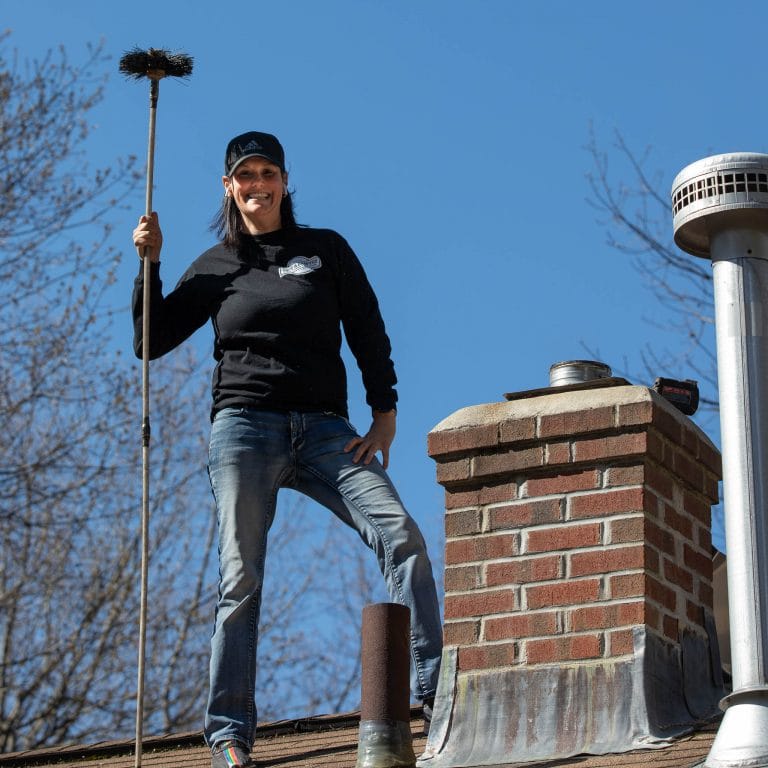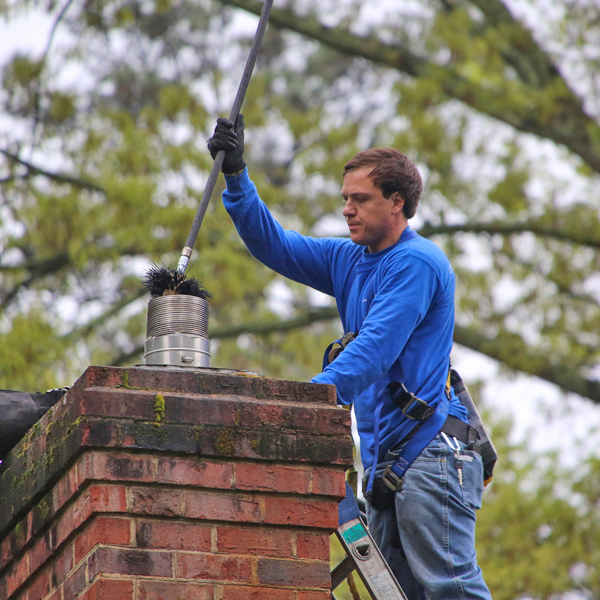Chimney Clean San Jose Quality: Ensuring a Clean and Efficient Fireplace
Chimney Clean San Jose Quality: Ensuring a Clean and Efficient Fireplace
Blog Article
Smokeshaft Cleansing: A Step-by-Step Guide to Maintaining a Healthy Fire Place
Regular smokeshaft cleansing is a vital part of this maintenance regimen. By complying with these guidelines, you will find out exactly how to gather the necessary devices, do a visual inspection, clear particles and build-up, move the smokeshaft, and complete the last steps for ongoing upkeep.
Gathering the Necessary Devices
To begin the procedure of smokeshaft cleaning, the initial action is to gather all the needed tools. Having the right tools available makes sure a secure and effective cleaning process. The vital devices for smokeshaft cleaning consist of a chimney brush, a ladder, decline cloths or plastic sheets, a flashlight, handwear covers, and a dust mask.
The chimney brush is the key tool utilized to get rid of soot and creosote accumulation from the flue - Chimney Sweep San Jose. It is important to select a brush that matches the dimension and shape of your chimney.
Decline cloths or plastic sheets are vital for protecting the surrounding location from dirt and debris. They assist have the mess and make clean-up less complicated. A flashlight is important for checking the smokeshaft's interior for any indications of damages or blockages. Gloves are required to secure your hands from residue and various other hazardous compounds, while a dust mask aids protect against the inhalation of debris.
Carrying Out a Visual Assessment

Making use of a flashlight, carefully analyze the indoor wall surfaces of the smokeshaft for any kind of signs of damage, such as cracks, loose bricks, or mortar degeneration. These concerns can endanger the smokeshaft's architectural honesty and pose a major safety risk. Furthermore, check for any type of indications of water damages, such as staining or efflorescence, as this can suggest a leaking chimney cap or flashing.
Next, examine the chimney flue for any obstructions. Look for the presence of nesting materials, leaves, or particles that might have accumulated over time (Chimney Sweep San Jose). These blockages can limit air flow, boost the danger of carbon monoxide buildup, and hinder the smokeshaft's capacity to properly air vent smoke
During the visual inspection, pay very close attention to the chimney crown, which is the leading surface area that secures the chimney from moisture. Look for splits or missing out on pieces in the crown, as these can allow water to enter the smokeshaft and trigger significant damage.
Clearing Up Particles and Build-up
After completing the aesthetic examination, the next action in smokeshaft cleaning involves clearing up debris and build-up to ensure the proper performance of the fire place. Gradually, debris such as leaves, branches, and animal nests can gather in the smokeshaft, obstructing the flow of air and creating prospective fire hazards. In addition, the accumulation of creosote, a tar-like substance, is a common trouble in chimneys. Creosote is created when wood or fossil gas are shed, and otherwise eliminated consistently, it can cause chimney fires.
To clear particles and accumulation, it is essential to make resource use of the right devices and methods. A smokeshaft brush, especially developed for this function, is made use of to remove loose particles and creosote from the smokeshaft walls. It is necessary to pick a brush that matches the size of your smokeshaft to make certain effective cleaning. Prior to beginning the cleansing process, see to it to cover the fire place open up to avoid particles from dropping into the room.
To begin, put the brush into the chimney and relocate it up and down, rubbing the wall surfaces to remove any type of debris or creosote. Once the brushing is full, make use of a vacuum cleanser or a chimney brush extension to remove the dislodged particles from the fire place.

Brushing Up the Smokeshaft
The sweeping of the smokeshaft is a vital action in keeping a healthy and balanced fire place. Gradually, residue, creosote, and other debris can build up in the chimney, obstructing the flow of air and possibly creating an unsafe build-up of combustible materials. Regular chimney sweeper not only visit ensures correct air flow yet additionally protects against the danger of smokeshaft fires.
When it comes to chimney sweeping, it is very suggested to hire a specialist chimney move. These professionals have the expertise and tools necessary to safely and effectively eliminate the accumulated particles from your chimney.
It is crucial to note that the regularity of smokeshaft sweeping depends upon numerous elements, such as the kind of fuel utilized, the quantity of usage, and the sort of chimney. As a general regulation of thumb, it is suggested to have your smokeshaft brushed up and examined at the very least yearly.
Final Actions and Upkeep
To guarantee recurring upkeep and ideal efficiency, it is vital to apply regular upkeep techniques and follow a detailed collection of final steps for your fire place. After finishing the smokeshaft sweeping process, the initial step in the last upkeep is to examine Check This Out the chimney cap and trigger arrestor. These parts prevent debris, animals, and rain from getting in the chimney. Look for any type of indicators of damages or blockage, and clean or repair them if required.

Examine the within the fire place for any kind of signs of degeneration, such as splits, loosened blocks, or harmed mortar. These issues can affect the structural stability and security of the fire place. Get in touch with a specialist smokeshaft move or mason to resolve them without delay. if any kind of troubles are identified.
Ultimately, take into consideration mounting carbon monoxide gas detectors near the fire place and throughout your home. These gadgets can discover the existence of this harmful gas, offering an early warning system in instance of a smokeshaft breakdown. On a regular basis inspect and replace the batteries in these detectors to ensure their effectiveness.
Verdict
To conclude, following a step-by-step guide for smokeshaft cleansing is crucial in maintaining a healthy fireplace. By collecting the essential devices, executing an aesthetic examination, getting rid of particles and accumulation, and sweeping the chimney, property owners can guarantee the security and efficiency of their fireplace. Routine maintenance and cleaning will help stop smokeshaft fires and boost air top quality in the home. It is vital to focus on smokeshaft cleansing as a part of overall home upkeep.
The vital tools for smokeshaft cleaning consist of a chimney brush, a ladder, decline fabrics or plastic sheets, a flashlight, handwear covers, and a dirt mask.
A chimney brush, particularly designed for this objective, is utilized to get rid of loose particles and creosote from the chimney wall surfaces. Regular smokeshaft sweeping not just ensures correct ventilation yet also stops the risk of smokeshaft fires.
When it comes to chimney sweeping, it is extremely advised to employ a specialist chimney move. After finishing the chimney sweeping procedure, the initial step in the last maintenance is to check the smokeshaft cap and stimulate arrestor.
Report this page